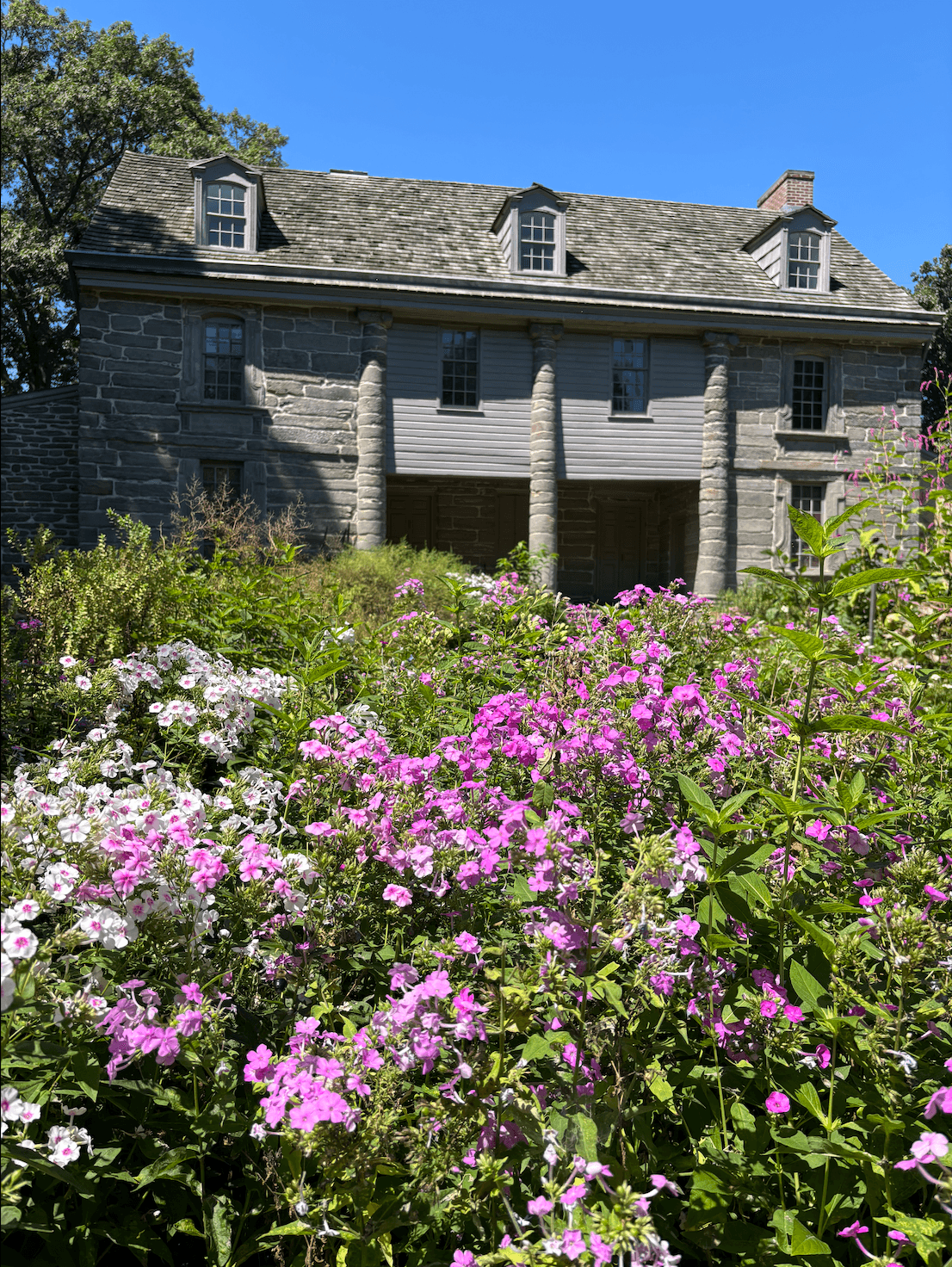Discovering Bartram's Garden

At the end of August, I had the opportunity to explore Bartram's Garden in Philadelphia. As a history lover I fell right down the rabbit hole, peering eagerly into the past through what turned out to be a fantastic garden.
Once I got there, I was surprised that I hadn't heard of Bartram's many years ago. The garden is on the Schuylkill River, south of Center City. When John Bartram settled the land 300 years ago, it was a choice location and the envy of his contemporaries. Now it's in a run down neighborhood in southwest Philly where trash and used tires line the street near the entrance, but don't let that deter you from visiting and enjoying the beauty within. I had no idea how special the park and the historic buildings inside the park are.
So who was John Bartram? I myself had only heard of him in passing when I was researching other 18th century people in Philadelphia. A quick internet search revealed that John Bartram (1699-1777) was an American naturalist, explorer, horticulturist, and botanist. He was actually a botanist for King George III years before Pennsylvania kicked the king to the curb. Bartram experimented with hybridizing flowering plants and made long voyages into the American interior to explore the wilderness. He also met with native American tribes during his travels. Bartram was a friend of Ben Franklin and an early member of Ben's American Philosophical Society. Of course he was. If you've spent any time with Ben and his relentless intellectual curiosity, John Bartram's intellect would have been a powerful and welcome match for Ben the scientist and innovator. Ah, to have been on a fly on the wall during their fireside chats...
The Bartram family sold plants internationally for many years, shipping many specimens worldwide. John Bartram gained celebrity during his lifetime. His gardens and plant knowledge were known to be extraordinary during the 1700s.
According to the Bartram's Garden website, the land Bartram's Garden is on was held by the Bartram family for three generations from 1728 until 1850. John had originally purchased 102 acres from Swedish settlers. And of course, before that, the land was inhabited by native Americans for thousands of years.
In 1850, Bartram's land was sold via auction to Andrew Eastwick, a Philadelphia industrialist who worked to have the gardens and historic buildings preserved. Twelve years after Eastwick's death, in 1891, Bartram's Garden became part of Philadelphia's public park system. In 1960, Bartram’s Garden was recognized as a National Historic Landmark by the U.S. Department of the Interior. Apparently it's the oldest botanical garden to survive in North America. I believe it. The entire site shimmers with the glint of a rich and complex past.
I didn't know any of this when I ventured in the garden for the first time. After a quick stop in the Visitor's Center I headed to the flower gardens. It was August, so they were bursting with color and growth. I didn't get far before I glanced up and saw the house. I don't recall seeing anything like it. Made from stone, there were words carved into the house. "John and Ann Bartram 1731." Around the back another inscription: "It is God Alone/Almyty Lord/The Holy One By Me Ador'd/John Bartram 1770." Fascinating. The window frames were also stone, and ornately carved. Everywhere I looked the stonework was interesting and unusual. It reminded me a little of twisty and unusual Fonthill Castle in Doylestown, PA - although of course that is concrete and not stone. There are other original outbuildings still standing at Bartram's, like the barn and coach house. I look forward to doing a lot more reading about John Bartram and his life and garden.
Today's Bartram's Garden is 50 acres in size. You can walk the trails down to the river, traipse through the meadow, sigh over the flower gardens around the house, marvel at the handful of special historic trees, or even go out fishing or boating. I saw a sign for a community garden as well, although I didn't venture that far. I kept returning to the stone house and the exuberant, overgrown flower gardens.
Like most historic or modest community sites, it's obvious that an infusion of cash and scholarship would be welcome at Bartram's Garden. Out front, trees branches and vines are clambering over the signage. You can't help but get the feeling that a handful of people are working really really hard to shoulder the weight of moving forward in hard economic (and political) times when they really could use triple the staff and a boatload of fresh money. Kudos to them. Bartram's belongs in the next century as well. It's too special to fall into obscurity or transfer hands from the city to a private buyer.
I'm looking forward to going back to Bartram's Garden and exploring it more when I have the opportunity. You can learn more at www.bartramsgarden.org.